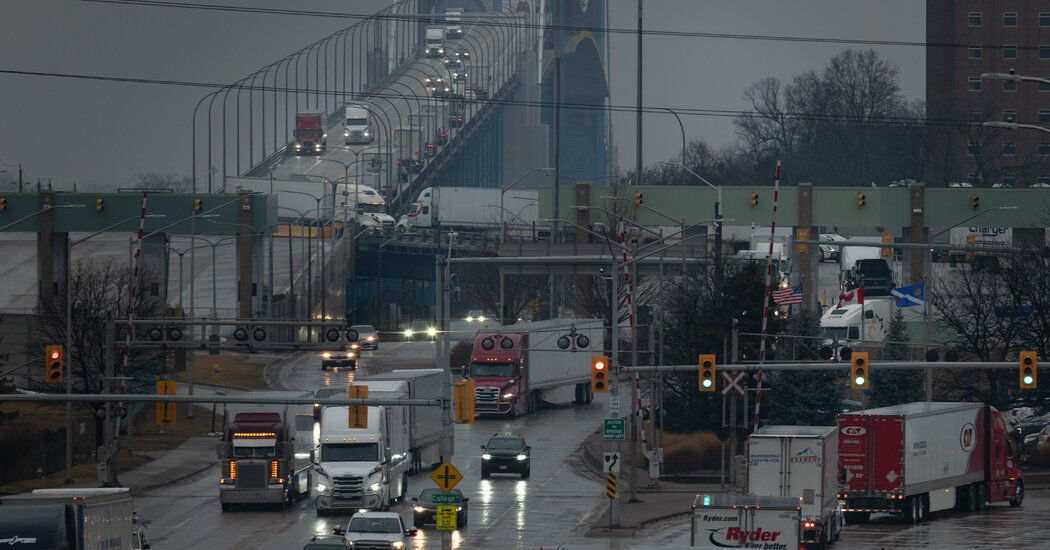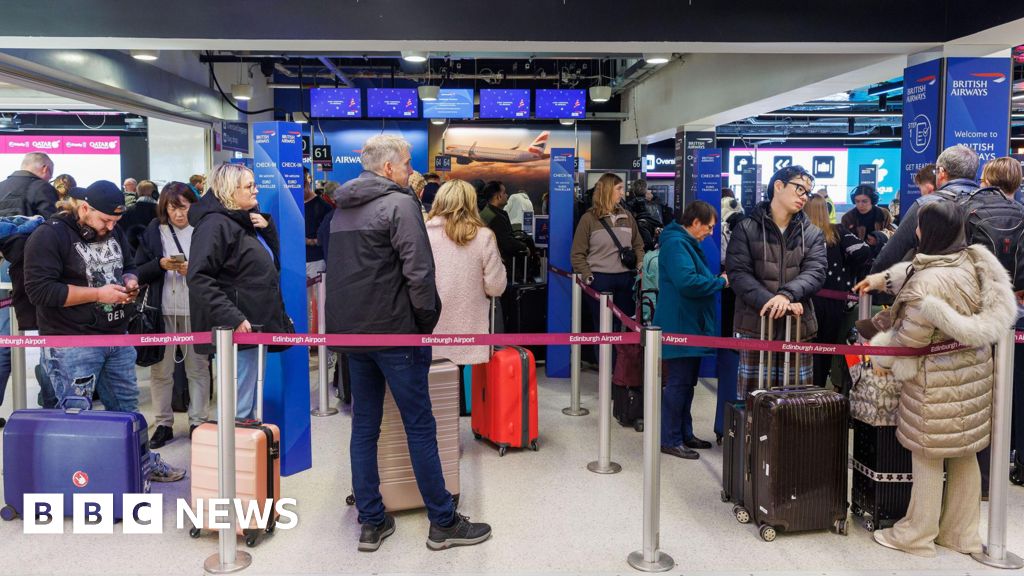
Who Pays for Tariffs? Here’s What You Need to Know.
- Business
- February 2, 2025
- No Comment
- 282
President Trump is moving forward with extensive tariffs on America’s closest trading partners. Beginning Tuesday, companies bringing products into the United States from Canada and Mexico will pay a 25 percent tariff; importers bringing products in from China will pay an additional 10 percent on top of existing levies.
The president has insisted that these tariffs will not increase prices for American consumers and that if anyone pays the cost, it will be foreign countries.
But a simple review of how tariffs work suggests that is not the case. Here’s what to know about who pays.
Who pays for tariffs up front?
A tariff is an extra surcharge put onto a good when it comes into the United States. It is the so-called importer of record — the companies responsible for importing that product — that physically pays tariffs to the federal government.
Many importers of record are enrolled in the government’s electronic payment program, and have tariff fees automatically deducted from their bank accounts as they bring products into the country. Tariff revenue is collected by U.S. Customs and Border Protection, though Mr. Trump has floated the idea of creating an entirely new agency to deal with money earned from his tariffs.
Importers of record can be of any nationality. They can be U.S. companies or foreign companies with or without a U.S. presence. They can also be customs agents who work on behalf of other firms to handle their imports and exports.
But Richard Mojica, a customs lawyer at Miller & Chevalier, said that importers of record are typically owners or purchasers of goods, and are “usually U.S. companies.”
Many U.S. companies have expressed frustration with Mr. Trump’s frequent assertions that foreign countries pay for tariffs, saying they are paying those taxes themselves.
Arnold Kamler, the chairman of Kent International, a New Jersey-based firm that manufactures bicycles in China and in South Carolina, said that he has been paying tariffs on both bikes and parts he imported since Mr. Trump imposed his first round of Chinese tariffs in 2018.
“The Trump administration was very proud to say that China is paying the tariffs,” he said. “I was always very quick to say, well, if somebody in China wants to pay it, I’d be happy, but we’re paying it.”
Who ultimately bears the cost?
The next question is who ultimately will bear the tariffs’ costs. The importer can choose to absorb the cost, but that would eat into its profits. Some importers say paying a 25 percent tariff would erase their profit margins entirely and put them out of business.
If importers do not want to absorb the cost of the tariff themselves, they have two other options. They can try to force the supplier who sold them the goods to lower their prices to make up for the tariff. Or they can pass the cost on to their customers, in the form of higher prices.
Every case is different. Outcomes theoretically depend on a company’s market power, or how much influence it exerts over other firms. If an importer is a big, powerful buyer of a product, it might be able to force its suppliers to eat the cost of the tariff. But if it is a small business ordering low volumes of goods, it likely cannot.
The tariffs that Mr. Trump slapped on foreign products in his first term provide some illustrative examples. For the ones that he put on hundreds of billions of dollars of goods from China, several economic studies found that most, if not all, of that cost was passed on to American consumers.
The tariffs Mr. Trump put on foreign steel may have worked a little differently. One 2020 paper suggested that, a year after those tariffs went into effect, only about half of the cost was passed through to consumers.
Mr. Kamler of Kent International said the tariffs Mr. Trump put on products from China had forced him to raise his prices. “And they say this is not inflationary,” he said. “It’s just not true.”
Having the cost of a tariff passed through to consumers might seem like a bad thing. But Wendy Edelberg, a senior fellow at the Brookings Institution, said it is actually central to the entire idea of a tariff.
“The point of tariffs is to raise domestic prices,” Ms. Edelberg said. The typical argument for imposing tariffs is that U.S. manufacturers cannot compete with the cheaper price of imports, and can only be healthy and profitable if the price of a good is higher, she said.
The idea of raising prices is “baked in to why you are imposing a tariff,” she said.
How much could this cost American households?
Economists say companies are likely to pass at least some of the cost of new tariffs on to American consumers, in order to try to preserve their profit margins.
Estimates from the Tax Foundation, a think tank that favors lower taxes, put the extra cost to American consumers from tariffs on Canada and Mexico at more than $830 per household in 2025. The move would put an additional $958 billion burden on Americans between 2025 and 2034, the group estimates.
These estimates don’t include the extra cost of another change the Trump administration — removing what’s called the de minimis exemption, which allows shipments under $800 to come into the United States tariff free. That change will be particularly impactful for products coming into the United States from China because it means shipments under $800 will, for the first time, be subject to the tariffs Mr. Trump put on China in his first term.
One thing people often misunderstand is that the tariff is not typically charged on the full sticker price of a good that you would see at the store. Instead, the 10 percent or 25 percent fee is charged on a lower “import price” that the company pays to bring the product into the country, before the price is marked up at the retailer.
Still, those prices add up. Michael Jeppesen, a shoe industry executive who previously worked for Adidas, Payless and other companies, gave an example. A pair of sneakers might cost $20 to produce in China, and $1 to ship across the border, he said. The shoe importer would pay the tariff — let’s say 20 percent — on that price, adding about $4, and bringing what the industry calls a “landed cost price” to $25.
The importer roughly doubles that price to sell it at $50 wholesale to the shoe retailer, and retailers in turn double their prices to charge American consumers about $100 on average for the shoes.
If the tariff is raised from 20 percent to 30 percent, now importers are paying $6 in duties instead of $4. The landed cost price becomes $27, translating to a $55 wholesale price and a $110 sticker price at the store. So a 10-percentage-point increase in tariffs has added about $10 per pair of shoes for the American customer, he said.
If shoe companies don’t pass those additional costs on to consumers, their profit margins will fall. And Mr. Jeppesen said that brands need those profit margins to pay for their sales forces, distribution channels, product innovation and other expenses.
What is the cost to the U.S. economy?
Mike Short, the president of global forwarding at C.H. Robinson, a trucking company that ships products around the country, said that the effect of tariffs on industry wouldn’t be like flipping a switch on the economy.
Even with the new tariffs, he said, “freight still needs to move, production lines still need to run and consumers still expect full shelves.”
Over the longer run, however, economists expect tariffs to drag on the economy, as consumers and companies alike are forced to reduce their purchases of foreign items with higher prices. Analysts at Goldman Sachs have estimated that across-the-board tariffs on Canada and Mexico would result in a 0.7 percent increase in core prices and a 0.4 percent reduction in U.S. gross domestic product.
Researchers at the Peterson Institute for International Economics in Washington estimate that a 25 percent tariff would hit Canada and Mexico the hardest but would slow economic growth and accelerate inflation around North America. Adding in the tariffs from China, U.S. gross domestic product would dip by about a third of a percentage point by 2027, they estimate.
Mr. Trump has remained steadfast in his view that if there is any pain, it will be worth it.
“WILL THERE BE SOME PAIN?” he wrote on social media on Sunday. “YES, MAYBE (AND MAYBE NOT!). BUT WE WILL MAKE AMERICA GREAT AGAIN, AND IT WILL ALL BE WORTH THE PRICE THAT MUST BE PAID.”
#Pays #Tariffs #Heres









